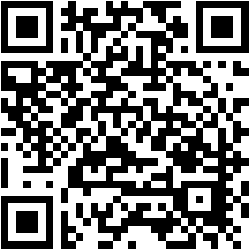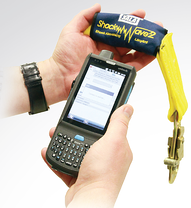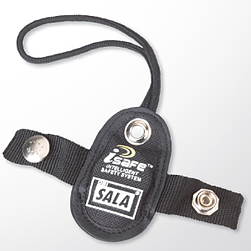The increased reliance on wireless and paperless technology is keeping employees safer while working at heights. Two perfect examples of this new tech movement include QR codes and RFID technology.
 With mobile, handheld devices becoming increasingly popular, many manufacturers are now turning to QR codes to direct customers to owners’ manuals, brochures, and technical data. QR codes, also known as quick response codes, are optically machine readable labels that can be included in print ads or applied to shipping boxes or actual products. QR codes are nothing more than a black matrix arranged on a square grid, as shown to the left.
With mobile, handheld devices becoming increasingly popular, many manufacturers are now turning to QR codes to direct customers to owners’ manuals, brochures, and technical data. QR codes, also known as quick response codes, are optically machine readable labels that can be included in print ads or applied to shipping boxes or actual products. QR codes are nothing more than a black matrix arranged on a square grid, as shown to the left.
By scanning the matrix with a QR code reader available for your I Phone or Android device, you can download technical information to your smart phone or tablet in the seconds. The example above is a link to our Portable Guard Rail (PGR) Installation Manual, which is in PDF format.
Providing this mechanism to retrieve the PGR installation manual does several things. From a practical standpoint, a contractor no longer needs to bring a paper version of the installation manual to the work area. Imagine watching your instruction manual blowing off the top of a roof during an install or picture a scenario where the instruction manual is left behind in the truck, or worse yet, back at the shop. By having all of the directions stored on a mobile device, contractors simply slip their phone into a pocket and all of the installation instructions are at their fingertips. Even in instances where the instructions weren’t downloaded prior to arriving at the jobsite, contractors and maintenance personnel can simply scan the QR code with an internet enabled mobile device. In addition, there is no need to maintain a file containing a printed copy of the installation manual for future reference. The next time the manual is required, maintenance personnel simply scan the QR code attached to the guardrail and all of the information is immediately accessible. With the installation manual in hand, your maintenance staff can rest easy, leaving the work area with confidence knowing their install is performed correctly. We are currently in the process of making more of our installation manuals and related documentation available via QR code technology.
The use of QR codes isn’t the only example of how technology can be used to keep workers safer. RFID tags (Radio-Frequency Identification) are another example of how we are harnessing new technology to promote workplace safety. Logistics professionals are familiar with the use of RFID tags and the handheld, wireless readers used to track the movement of shipments flowing through the supply chain. This same technology is now being used in the fall protection sector.
 Regular readers of our Tech Talk Blog know that re-certification of PPE and engineered fall protection systems is an important part of a comprehensive fall protection program. Until recently, keeping records of inspections involved EHS managers sifting through mounds of paper to determine inspection cycles and scheduling re-certifications of their fall protection equipment and PPE with the manufacturer. Depending on the size of the organization, this might mean keeping tabs on PPE and engineered systems in different cities, states, or countries. Making use of RFID technology, we can now automate all inspections and compliance activities with a product called I-Safe.
Regular readers of our Tech Talk Blog know that re-certification of PPE and engineered fall protection systems is an important part of a comprehensive fall protection program. Until recently, keeping records of inspections involved EHS managers sifting through mounds of paper to determine inspection cycles and scheduling re-certifications of their fall protection equipment and PPE with the manufacturer. Depending on the size of the organization, this might mean keeping tabs on PPE and engineered systems in different cities, states, or countries. Making use of RFID technology, we can now automate all inspections and compliance activities with a product called I-Safe.
Part of the beauty of this system is simplicity. PPE and engineered fall protection systems are equipped with an RFID-enabled tag which log model, manufacture date, and location into a database. The system helps to ensure regular inspections and generates an updated record log that verifies compliance. Utilization of RFID is over 35% more efficient than manual, paper-based inspection systems and asset management capability allows managers to track the location and status of safety equipment at multiple locations. To illustrate the power of this system, imagine a manufacturer recall on a SRL, lanyard, or other piece of PPE or an unannounced OSHA visit to verify certification of your rooftop HLL: the I-Safe system can quickly determine the location of every piece of PPE affected by a recall or quickly produce a log verifying your inspection and re-certification history.
And although our primary focus in our Tech Talk Blog is fall protection, this same RFID technology can be used to log location and inspection schedules for fire extinguishers, ladders, and tools just to name a few.
QR Codes and RFID are examples of how some fall protection companies are harnessing the power of wireless, paperless technology to promote a culture of safety. Remember to know your options and know your partners. When vetting fall protection companies be sure to ask how they use technology to keep your employees safe so everyone goes home at the end of the work day…..you’ll be glad you did.
Retrofit RFID Tags Easily Attach To Equipment


